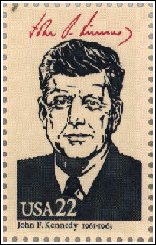Principles Of Trade
America's official policy has been to apply certain principles to trade agreements; these principles are also the cornerstones of the GATT. The first is nondiscrimination. According to this principle, also known as most-favored-nation (MFN) treatment, all trading partners must be given the same customs and tariff treatment given to the so-called "most-favored-nation." The United States now applies this policy to its trade with all of its trading partners except for those that, for foreign policy reasons, are specifically excluded by law.The extension or withdrawal of nondiscriminatory treatment has sometimes been used to further foreign policy objectives. For example, the United States granted MFN status to China as part of an effort to improve relations with that country. The United States has also withheld MFN status from nations for human rights reasons. There is an ongoing debate within Congress and the federal agencies about the efficacy of using trade policy to further foreign policy objectives.
A second principle that the United States applies to trade is reciprocity. This says, in effect, that one nation has to make no greater internal adjustment than the other in the implementation of trade agreements. In the 1980s this concept was used to buttress several so-called sectoral reciprocity proposals. These proposals would have required the U.S. government to restrict access to the U.S. market for any major trading partner, on a sector-by-sector basis, if that partner denied U.S. exports comparable market opportunities. Although most analysts concede that the threat of sectoral reciprocity can be a useful negotiating tactic, it is generally believed that such legislation would constrain negotiations and reduce the opportunity for achieving trade liberalization through broad, cross-industry compromises.
The United States has for the most part also followed a principle of multilateralism, as outlined in the Trade Expansion Act of 1962.
 This act
authorized the president
to negotiate multilateral trade liberalization in the so-called "Kennedy Round" of trade
negotiations, which aimed at reducing tariffs between the United
States and its trading partners. In this round of negotiations,
53 nations accounting for 80 percent of international trade
agreed to cut tariffs by an average of 35 percent.
This act
authorized the president
to negotiate multilateral trade liberalization in the so-called "Kennedy Round" of trade
negotiations, which aimed at reducing tariffs between the United
States and its trading partners. In this round of negotiations,
53 nations accounting for 80 percent of international trade
agreed to cut tariffs by an average of 35 percent.
The principle of multilateralism was for many years the basis for U.S. participation and leadership in successive rounds of international trade negotiations. In 1979, as a result of the success of the Tokyo Round, the United States and approximately 100 other nations agreed to further tariff reductions, and to the reduction of such nontariff barriers to trade as quotas and licensing requirements.
In the 1980s the United States led the call for a new set of multilateral trade negotiations, which culminated in the launching of the Uruguay Round in September 1986. In these negotiations, the United States pushed for the development of rules to eliminate the use of agricultural subsidies and to extend GATT codes of conduct to services trade, among others.
Despite general adherence to the principles of nondiscrimination, the United States has been party to certain preferential trade arrangements. These arrangements include the U.S. Generalized System of Preferences program, the Caribbean Basin Initiative, the U.S.-Israel Free Trade Area Agreement, and the U.S.-Canada Free Trade Agreement. In the early 1990s, efforts were under way to reach agreement on another bilateral trade arrangement, this one between the United States and Mexico. And in 1990, President George Bush unveiled his Enterprise for the Americas Initiative, which would, among other things, pave the way for free trade throughout the Western hemisphere.
The Generalized System of Preferences program aims at promoting economic development in poorer countries by providing duty-free treatment of imports into the United States from these countries. Under this program, preferences are given to a country for exports of certain products; the preferences cease when the producers of a product no longer need assistance to compete in the U.S. market, as shown by actual trade performance. The GATT includes a general waiver from the principle of nondiscrimination for generalized system of preferences programs.
The Caribbean Basin Initiative is a program that was created in the 1980s to give economic support to a region that was struggling economically and was considered politically important to the United States. This program, which is scheduled to continue until the end of 1995, gives duty-free treatment to all imports to the United States from the Caribbean area except textiles, some leather goods, sugar and petroleum products.
Bilateral free trade arrangements are permitted under conditions specified in the GATT articles. The first free trade agreement entered into by the United States, the U.S.-Israel Free Trade Area Agreement, took effect on September 1, 1985, and the second, the U.S.-Canada Free Trade Agreement, took effect on January 1, 1989. Historically, geographic proximity has fostered vigorous trade among the United States and its two neighbors, Canada and Mexico. In August 1992, after more than a year of talks, these three countries completed negotiation of a comprehensive free trade agreement aimed at eliminating all tariffs on trade between them, reducing barriers to trade in services and investment, and ensuring adequate protection of intellectual property (including copyrights, patents and trademarks). Before taking effect, the agreement must be approved by the national legislature of each of the countries. Some U.S. trade unions opposed the agreement, fearing U.S. workers would lose jobs because of a flood of manufactured goods produced with cheap labor in Mexico. President Clinton supports the North American Free Trade Agreement, but is interested in negotiating supplemental agreements on environmental issues and labor standards.
